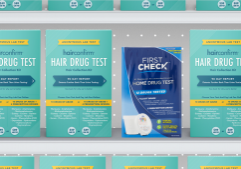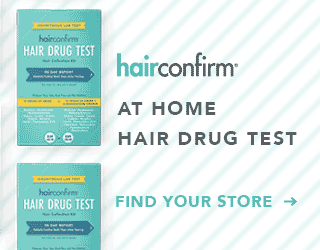Some of the Deadliest Drugs May Actually Be Obtained From Your Doctor
Here’s a familiar narrative — a person you know falls victim to some kind of trauma. Perhaps this person is a close relative, like your uncle. He’s been coping with tremendous lower back pain for months after a devastating car accident. Finally, with unrelenting pressure, you convince him to visit your family doctor, who prescribes opiate medication to take the edge off. It works. In fact, it works too well.
It was once believed that prescription opioid medication would be the ultimate solution for pain management in healthcare settings. Papaver Somniferum, or “sleep-bringing poppy”, is the source of numerous opioid derivatives. Unfortunately, this naturally occurring plant poses a serious threat to humankind. Controlled opiate use is helpful in many cases, but variations of this drug are often carelessly prescribed with little done to monitor the effectiveness of treatment. Prescription drug abuse causes more deaths in the United States than traffic and firearm fatalities, raising an issue worthy of unadulterated attention.
Opioid abuse statistics throughout the United States are sobering.
Prescription medication overdose deaths are a real concern. While the amount of painkiller prescriptions quadrupled in the past decade, illegal opioid use doubled in direct correlation. Each day, 91 lives are taken from the country due to prescription drug overdoses, prompting epidemic designation from The Center for Disease Control and Prevention (CDC). Opiate variations range from naturally occurring Morphine and Heroin, to synthetically manufactured Methadone and Fentanyl. Users of any of these prescribed opiate medications report sensations of numbness and detachment, which is why they are typically administered following reconstructive surgeries, major accidents and debilitating injuries. In your uncle’s case, Vicodin is issued for only a few weeks. But is that enough?
Short supply is not a problem when it comes to painkiller medication.
Even in situations where drugs are legitimately prescribed, there is a high risk of dependency due to the highly addictive properties of opiates. In South Carolina, 102 prescriptions were filled per 100 people surveyed, which translates to more annual prescriptions than the entire state population. Anyone from the underprivileged to the affluent can develop an opiate addiction, regardless of genetic predispositions to habitual behavior. Channels where illicit drugs can be obtained are open to all, though people aged 25 to 54 contributed to most of the country’s overdose fatalities. Many groups apart from end-users are affected by prescription drug abuse, including pharmaceutical manufacturers, healthcare providers and treatment centers. It is the responsibility of healthcare officials to vigilantly prescribe opioids in the lowest effective dosage, control the frequency of prescriptions and implement periodic drug testing to ensure the substances are administered to the correct individual. The problem is, these duties can be taxing to manage on top of the demands of running a successful healthcare practice. Two weeks worth of pain meds are all used up, but your family doctor refuses your uncle’s request for more. So he finds alternate providers.
Fortunately, preventative treatment methods are on the rise.
By adopting a Prescription Drug Monitoring Program (PDMP), caregivers gain access to a recorded pathway of controlled medication, from provider to patient to pharmacy. This emerging preventative plan of care effectively combats “doctor shopping” and “pill milling”, i.e. finding new providers and pharmacies to dispense opiate medication. PDMPs yield fantastic outcomes across 49 states, despite their relative newness. In fact, Florida’s PDMP resulted in a revised prescription medication plan in 41% of cases, according to the National Center for Biotechnology Information. The benefits of prescription drug monitoring programs are persuasive enough to be adopted in other areas of the world. Although prescription drug monitoring programs are proven to be useful, diagnostic treatment prevails in case of an overdose emergency. When death is imminent, the “antidote” Naloxone can save a patient’s life if administered in a timely manner.
Opioid Abuse is becoming a global concern.
The United States is not the only country struggling with the onslaught of opiates. As of 2017, the Canadian province of British Columbia reported a 90% jump in opioid-related overdoses in the past year. Sadly, issuing fewer opiate prescriptions may do little to stop Fentanyl distribution. With potency 50 to 100 times greater than Morphine, Fentanyl is being synthesized and at an alarming rate. There is no way the human body can naturally produce dopamine to match the levels secreted by the brain in response to Fentanyl consumption. This is why the demand for opiates need to be controlled before the drug is eradicated; otherwise, newer, more dangerous opiates can be synthesized to accommodate the physical and psychological need for the drug. Thorough research into the effects of opioid abuse is the most effective treatment against this snowballing problem. Before a loved one like your uncle resorts to uncontrolled use of prescription medication, make sure you’re equipped with an arsenal of education.
There are actionable steps to detect prescription drug abuse.
Any form of opiate use can be detected using a variety of drug tests. Effective methods of opiate identification involve analysis of saliva, urine or hair. Prescription drug use can be traced any time between 12 hours to 90 days prior to screening, depending on the type of drug test. Using accredited specimen testing is the first step to obtaining evidence of prescription drug misuse or overuse. Screening can be conducted in a professional healthcare setting or in the privacy of one’s home, while confirmation testing can take place in any laboratory. Opiates are among SAMHSA’s Top Five drugs of abuse, so it is paramount to stay informed about every available opiate to prevent ongoing abuse. Recovering patients need to play an active role in their recovery if they wish to regain personal autonomy. Drug abuse is a global concern, and any effort made to combat the sweeping pandemic is a worthy venture.
The narrative of the future might sound something like — your uncle’s lower back trauma is severe, but before visiting his family doctor, he conducts a personal inquest on prescription drug use. Once he learns about the types of frequently abused opiates and reads hundreds of true anecdotes surrounding the epidemic, he expresses reservations to his physician. Not only does your uncle receive priceless advice, he also strengthens the rapport between himself and his doctor. He undergoes drug testing every few months for adjustments to his Plan of Care. Opiate medication is prescribed only until the pain desists, so your uncle is less likely to develop an addiction. He inevitably recovers as one less potential drug abuser in the country.
Support
Ordering
About Us
Connect
Confirm BioSciences.
© 2019 Confirm BioSciences, Inc.
All Rights Reserved. See our Terms & Conditions and Private Policy.



